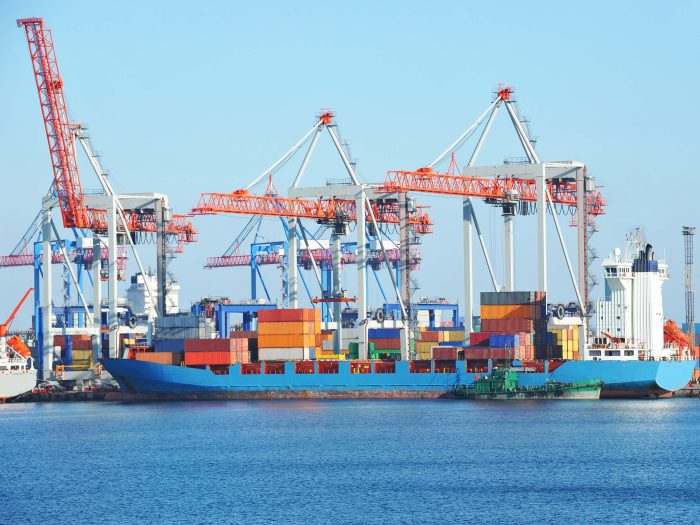6 Supply Chain Setbacks and Their Domino Effect on Business Resilience

Global supply chains are still impacted due to the events of the last 18 months. This is resulting in a number of drawbacks for business, including depressed sales, longer completion times, even litigation, as project completion deadlines are pushed back or abandoned altogether.
What makes this impact so strong, and potentially long lasting, are the myriad of reasons as to why supply chains are impaired.
The 2021 FM Global Resilience Index, released at the beginning of this year, presents a tool that is compiled of various points of data, including economic, supply chain and risk quality information. The index serves as a way for companies to determine how resilient they are when faced with risk.
Six months after the initial release of the Resilience Index, FM Global has now published what it thinks is causing supply chain setbacks and hurdles.
What’s Causing Supply Chain Woes?
FM Global narrowed down the root causes of supply chain and business resilience issues to six factors.
1) COVID-19
The pandemic proved to be a major, if not the most impactful, root of the supply chain struggle.
“[The pandemic] is the single largest driver from a supply chain threat perspective,” said Doug Backes, vice president of claims, FM Global.
Backes continued by saying why he thinks COVID-19 is having such a significant impact on supply chains all over the planet. Even the holidays are impacted, beverage and Christmas tree shortages were grabbing headlines the week of December 6.
“Usually, we see events that [affect] an area regionally, or small business areas, and the impact may [only last] a week, a month, a few months,” Backes said. “But COVID has impacted the entire global economy, [starting] in late December 2019, and it continues today.”
COVID-19 continues to wreck its havoc as new variants—most recently the omicron variant—are discovered and lockdowns and travel restrictions are re-established in some parts of the world.
Backes also noted that while there are still other factors impacting the global supply chain, “they’re [additives] on top of what is already being stressed because of the pandemic.”
2) Cyber Risk
It should not be a surprise to any professional that cyber risk has notably increased in recent months. What makes this risk so prominent is its ability to strike any sector at any time, while other risks tend to be more region-specific, such as climate change events.
The damage a cyberattack can do to the supply chain is demonstrable, as was seen with the attack on the Colonial Pipeline earlier this year.
Backes noted that a main contributor to cyber risk’s reach is the fact that many businesses “don’t realize how exposed or susceptible they [are].”
Because of a recent rise in cyber or ransomware attacks, Backes said that various cybersecurity details, once managed by an IT department, are now being overseen by “a cyber or data security steward [within] the organization.”
“That position barely existed 5 years ago, and now it’s an elevated position that is on the same par with risk management, or even more so,” he said.
3 & 4) Port Backlog and Truck Driver Shortages
The next two facets, port backlogs and truck driver shortages, coincide, according to Backes.
“They are both the result of the global economy going into a shutdown for a long time,” he said. “As the economy is [rebounding], we’re [seeing a shortage] in workers and ports.”
Transportation issues and shipping mishaps can have devastating consequences. Just witness the billions in losses that occurred when the Evergreen container ship created a blockage in the Suez Canal for days.
“The implications to the global supply chain were alarming,” Backes said.
5) Deadly Floods and Other Climate Events
In terms of flooding’s impact on businesses, Backes said that while certain areas of the globe have always had a certain susceptibility to flooding, the effects are more severe because the number of businesses that have established themselves in these flood-prone areas have generously increased.
But flooding isn’t the only type of climate change event that can have supply chain implications.
As climate change continues to produce more severe weather events, the global supply chain and businesses can feel those impacts months after an event has occurred. Backes mentioned the winter storm in Texas, which occurred this past February, as a prime example of this.
Regarding Winter Storm Uri, Backes said, “We thought it could be a relatively minor inconvenience on the supply chain, [but] our clients are reporting that they’re experiencing ongoing supply chain effects from that event.”
6) Chip Shortages
The pandemic forced warehouses and factors to shut down, which kickstarted the major issue of chip shortages across the U.S. and the globe.
Businesses that work in manufacturing devices, such as cell phones or cars, have run into a production delays from lack of computer chips.
Backes noted that there are “very few computer chip manufacturers” within the U.S., and the ones that do exist are very large, holding an enormous amount of responsibility.
To add to an already present issue, many of these manufacturers are in Texas, which were obviously impacted by the freeze event.
“[Winter Storm Uri] exposed what we knew was an already weak global supply of computer chips,” Backes said.
A shortage of chips makes completing business difficult, as computer chips play an integral role in several products.
Takeaways
While FM Global individually identified these factors, many either intertwine or serve as a domino effect to each other.
Backes said that because of this connectivity, it’s imperative for businesses to “understand and identify [their] supply chain,” and look at where they are most vulnerable and where they can prevent particular losses. &











